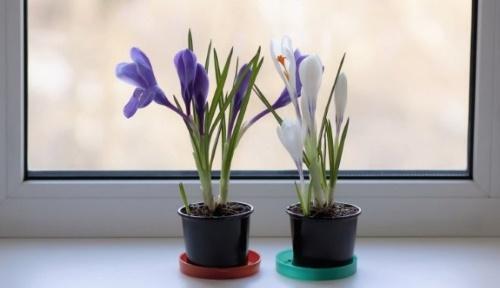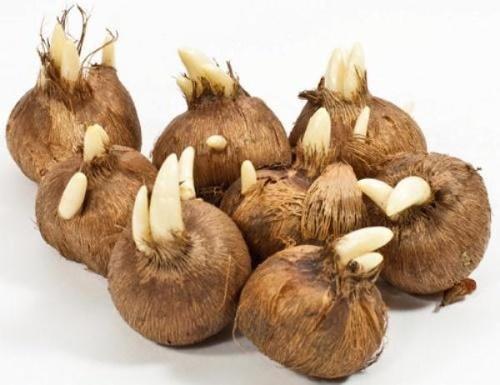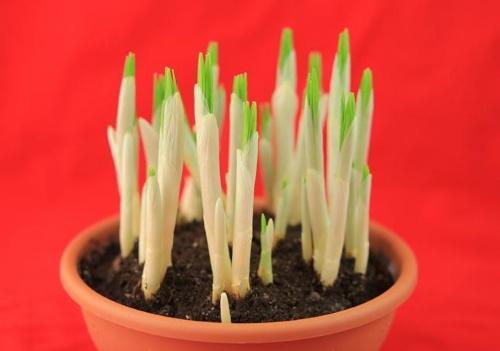How to care for crocuses at home: secrets for novice florists
 Crocuses are the most commonly used bulbous plants that can be distilled. Simulating the natural conditions in the room, it is easy to control the process of their flowering. Timely planting, as well as the alternation of coolness and warmth, allow you to shift or approach the flowering time. If you want to get a flowering plant by the appointed date, it is important to know two things. Firstly, this is the timing of planting the bulbs, and secondly, how to care for crocuses at home. Growing crocuses at home differs significantly from the maintenance of indoor flowers and, above all, by its temperature regime. However, let's talk about everything in order.
Crocuses are the most commonly used bulbous plants that can be distilled. Simulating the natural conditions in the room, it is easy to control the process of their flowering. Timely planting, as well as the alternation of coolness and warmth, allow you to shift or approach the flowering time. If you want to get a flowering plant by the appointed date, it is important to know two things. Firstly, this is the timing of planting the bulbs, and secondly, how to care for crocuses at home. Growing crocuses at home differs significantly from the maintenance of indoor flowers and, above all, by its temperature regime. However, let's talk about everything in order.
Determining the timing of planting

For the first week, the bulbs are kept at a high temperature (up to 34 ° C heat), then it is reduced to 20 ° C. In the second month of storage, the temperature should be reduced by another 3 degrees. A month before planting, the bulbs are moved to a refrigerator or to a cool room (no higher than 9 ° C heat).
Plant care after planting
 The chilled bulbs are ready to plant. Crocuses are driven out in shallow pots, preferably in bowls. They can be rooted both in clean sand and in a mixture of sand, earth and turf. You can plant both individually and several bulbs in one dish. It is not necessary to deeply bury, it is enough either to deepen it by a maximum of 10 cm, or even leave the top of the bulb above the ground.
The chilled bulbs are ready to plant. Crocuses are driven out in shallow pots, preferably in bowls. They can be rooted both in clean sand and in a mixture of sand, earth and turf. You can plant both individually and several bulbs in one dish. It is not necessary to deeply bury, it is enough either to deepen it by a maximum of 10 cm, or even leave the top of the bulb above the ground.
It is important that when planting in a group, the bulbs do not come into contact with each other, as well as with the walls of the flowerpot.
After planting crocuses, you hardly need to care for them. They take root in the dark and cool, not higher than 9 ° C heat. Accordingly, watering will be rare.
When the sprouts stretch up to 5 cm, the crocuses are transferred to a bright room, but keeping a cool regime.
How to care for crocuses during the flowering period?
 When the bulbs take root and enter the active growth phase, the plants need to be watered more frequently. Will help prolong flowering:
When the bulbs take root and enter the active growth phase, the plants need to be watered more frequently. Will help prolong flowering:
- maintaining a cool temperature at 15 ° C heat;
- diffused lighting;
- phosphorus fertilizing.
Faded bulbs are planted in the garden in the fall to form children. For re distillation they are usually not used. But if the bulb is well preserved, you can try to expel it again. To do this, crocuses are transplanted into nutrient soil, fed with ammonium nitrate (before and after flowering).